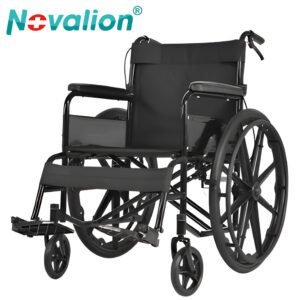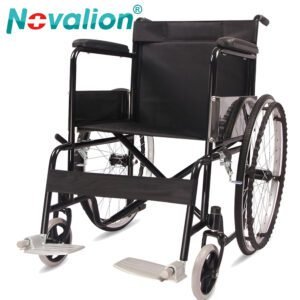Cool Wheelchair: 5 Key Questions Answered—From Design Trends to Custom Features & User Appeal
Gone are the days when wheelchairs were solely functional, clinical tools. Today’s “cool wheelchairs” blend style, personality, and practicality, empowering users to move through the world with confidence—and a touch of flair. But what exactly makes a wheelchair “cool,” and how does it balance aesthetics with mobility? Let’s dive into the details.
1. What Is a Cool Wheelchair? (Definition & Core Traits)
A cool wheelchair is a mobility aid designed to reflect personal identity while delivering reliable functionality. It’s defined by:
- Aesthetic Intent: Unlike standard wheelchairs, which prioritize neutrality, cool wheelchairs embrace intentional design—think bold colors, sleek lines, or custom patterns that feel like an extension of the user’s style.
- Customization at Its Core: From upholstery to wheel rims, these wheelchairs offer personalized touches (e.g., monograms, favorite sports team logos, or collaborations with artists).
- Lifestyle Alignment: They integrate with daily life, whether that means matching a streetwear outfit, fitting into a concert crowd, or complementing a minimalist home aesthetic.
- Functional Flair: Style never overshadows mobility—they retain key features like durability, maneuverability, and comfort, but wrap them in a design that feels “chosen,” not just “assigned.”
2. How It Differs from Standard Wheelchairs
The contrast is striking, especially in how users perceive and interact with their mobility aids:
- Aesthetics: Standard wheelchairs often come in gray, navy, or black with boxy frames—practical but impersonal. Cool wheelchairs break this mold with matte neon frames, marble-patterned seats, or carbon fiber with exposed weave for a high-tech look.
- Emotional Connection: Standard models may feel like “medical equipment,” while cool wheelchairs feel like “personal gear,” similar to a favorite backpack or pair of shoes. This shifts the narrative from “disability” to “identity.”
- Customization Limits: Standard wheelchairs offer minimal tweaks (e.g., adding a cup holder). Cool versions let users redesign nearly every visible part—even collaborating with designers for one-of-a-kind looks.
- Social Integration: At parties, events, or on social media, cool wheelchairs blend in as part of the user’s vibe, reducing self-consciousness and sparking conversations (instead of stares).
3. Ideal Users: Who Needs a Cool Wheelchair?
It’s more than a “style choice”—it’s a tool for confidence:
- Teens & Young Adults (13–30): Navigating school, friendships, or early careers, they often resist anything that makes them feel “different.” A cool wheelchair helps them fit in while standing out.
- Fashion Lovers: For those who plan outfits, follow trends, or express themselves through style, a wheelchair that clashes with their look can feel disheartening. A cool design completes their aesthetic.
- Lifestyle Creators: Influencers, performers, or anyone in the public eye need a wheelchair that looks intentional in photos, videos, or stage appearances.
Users Ready to Reclaim Their Narrative: Many transition to wheelchairs after injury or illness; a cool design helps them embrace their new mobility as part of their story, not a detour.
4. Key "Cool" Features: Style Meets Function
Aesthetic Customization:
- Upholstery: From tie-dye and animal print to minimalist linen or vegan leather in pastels, the seat becomes a canvas.
- Frames: Custom paint (matte black, holographic, or ombre), laser-etched quotes, or removable wraps (e.g., camo for outdoor lovers).
- Wheels: Colored rims (neon pink, metallic gold), spoked designs, or LED light strips that glow during night outings.
Tech & Lifestyle Add-Ons:
- Phone mounts that match the frame color, keeping devices accessible and stylish.
- Bluetooth speakers integrated into armrests for music on the go.
- Foldable designs that look like “designer luggage”—perfect for travelers who want to make a statement.
Sleek Functionality:
- Lightweight carbon fiber frames (strong yet modern) that are easy to maneuver and look cutting-edge.
- Narrow profiles (24–26 inches) for tight spaces, with a streamlined look that avoids bulk.
5. What to Consider When Buying a Cool Wheelchair
- Durability of Design: Custom paint or decals should withstand rain, scratches, and daily use. Ask about scratch-resistant finishes or warranty coverage for aesthetic elements.
- Mobility First: A neon frame won’t help if it’s too wide for your bedroom door. Prioritize fit (seat width, turning radius) before style.
- Cost vs. Value: Custom features add $200–$1,500 to base prices. Invest in elements you’ll love long-term (e.g., a favorite pattern) vs. trends that may fade.
- Confort: Stylish upholstery should still be padded (2–3 inches thick) to prevent pressure sores during long sits. Breathable fabrics (mesh, moisture-wicking) keep you cool, even in bold colors.
Conclusion
A cool wheelchair is about more than looking good—it’s about feeling seen. By merging style, customization, and functionality, it transforms mobility from a “need” to a “choice,” empowering users to move through the world as their full, authentic selves. For anyone ready to make their wheelchair an extension of who they are, “cool” isn’t just a bonus—it’s essential.
Merci d'avoir lu ces lignes. Si vous avez des suggestions à faire sur les sujets suivants notre site web ou souhaitez en savoir plus sur les fauteuils roulants, veuillez nous contacter. Nous répondrons rapidement.



